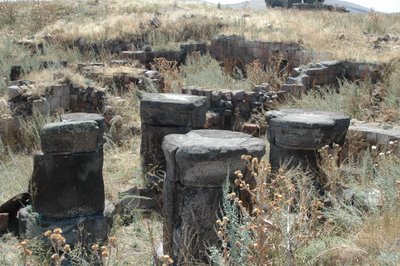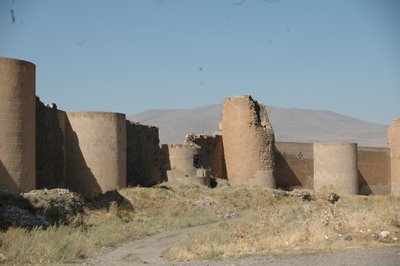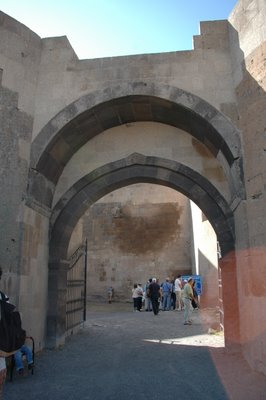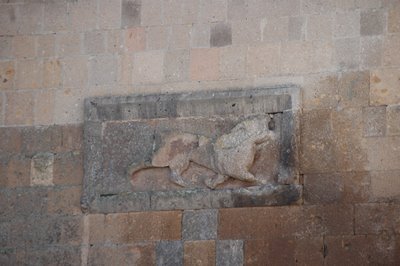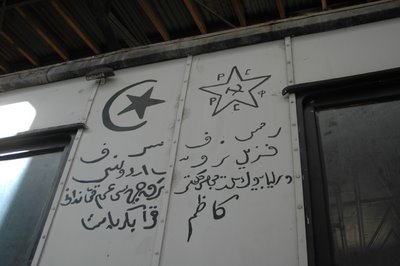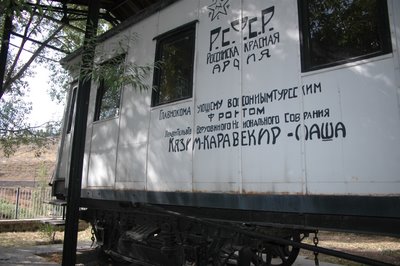Yes, literally, this is the border river in a gorge beneath the site. You can make out the remains of a bridge also. The border is closed and only a few years ago, visiting Ani meant getting permission from local security authorities.
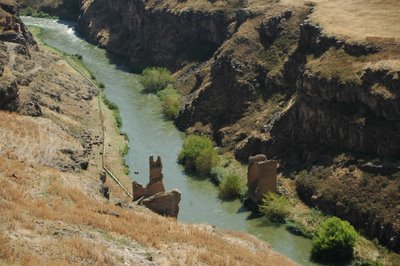
The next hill is Armenia! Returning to Kars after the visit, I had an Armenian phonenetwork for part of the time.
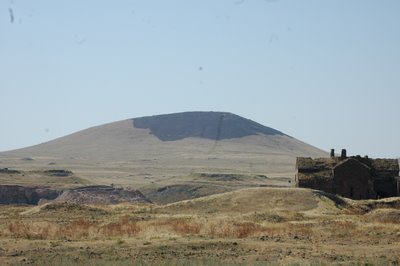
Ths was reported to be a (Russian?) military base and a stone quarry, both across the border, of course.

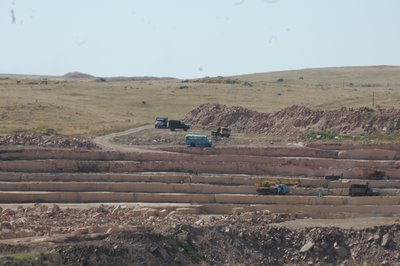
Actually, the years since the fall of the Soviet Union are the first in many centuries in which there is no direct Turkish-Russian border.
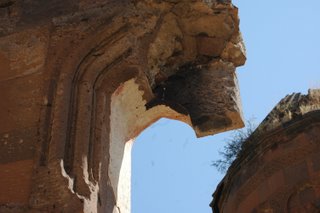
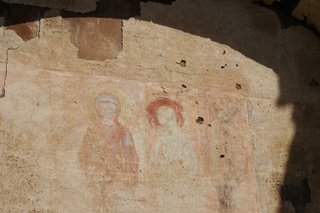
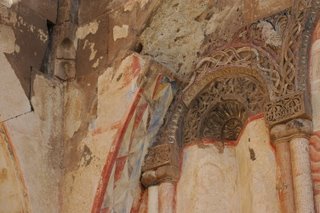
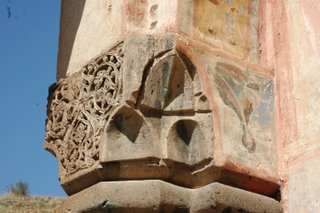
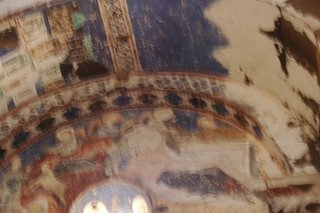 '
'
